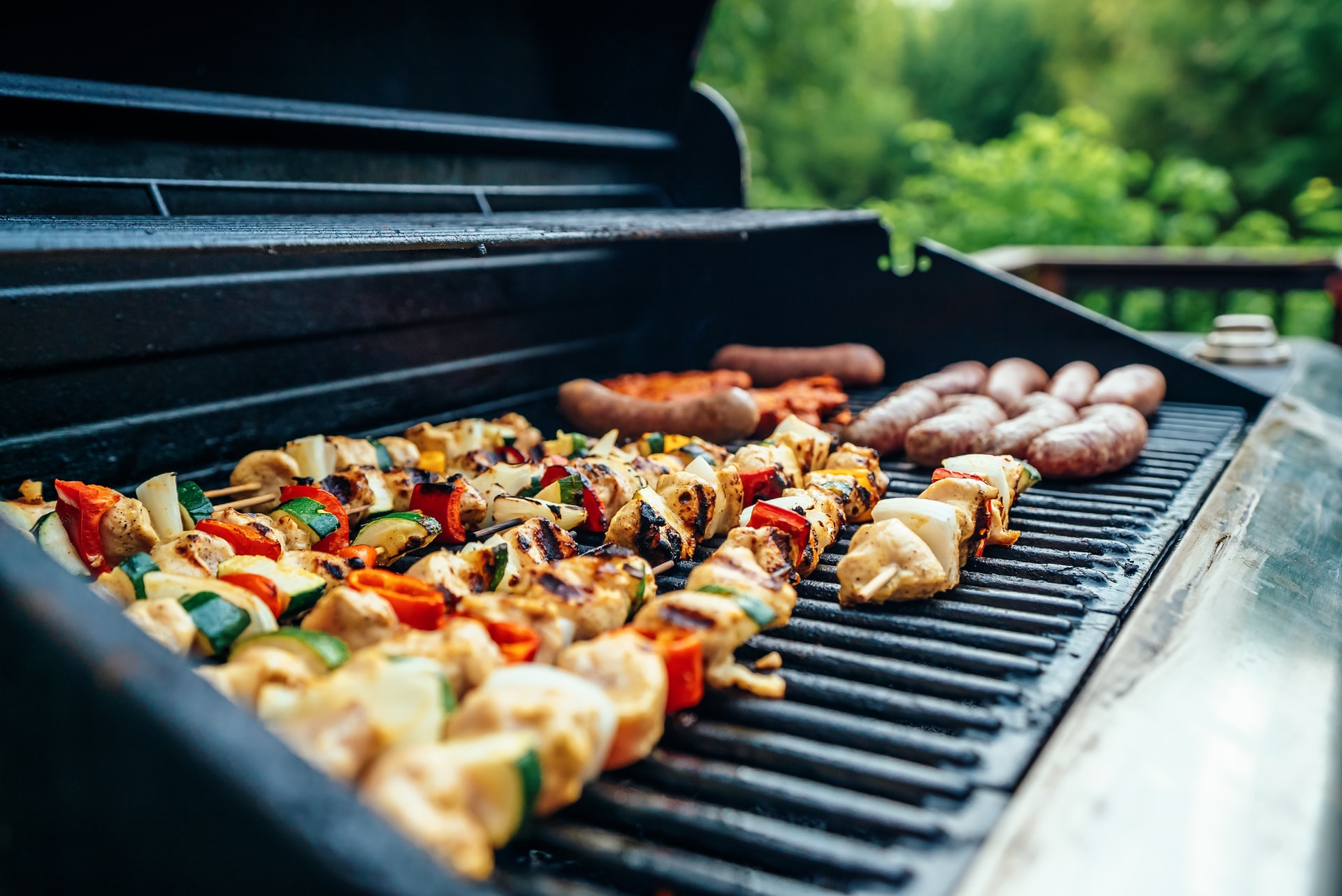An outdoor kitchen can create a host of great memories during warm months. It provides an extra form of entertainment for your family and guests. An outdoor kitchen has several advantages, but it can become a significant investment. We will share average prices for outdoor kitchens and how you can finance your outdoor kitchen.
Benefits of Having an Outdoor Kitchen
- Additional Entertainment and Living Space: An outdoor kitchen utilizes more square footage and makes your house feel larger. Some guests can use the outdoor kitchen during a party, while others may prefer to stay inside. If you have a large backyard, you can more easily accommodate many guests.
- Lower Energy Costs: An outdoor kitchen doesn’t cost as much money to maintain as an indoor kitchen. The sun provides natural light, which saves you on electricity. You also won’t have to use the AC to compensate for the oven’s heat. If you use an indoor oven, heat will spread across your kitchen and create an uncomfortably warm atmosphere. Grilling food outside will create a more pleasant experience that doesn’t raise the temperature of a tight room.
- Convenience: Some people set up an outdoor grill without other appliances. Homeowners with this setup have limited space for plates, glasses, and other necessities. An outdoor kitchen provides drawers, sinks, countertops, and other convenient resources. You’ll have more space in the kitchen instead of relying on the grill and your indoor kitchen.
- Added Home Value: An outdoor kitchen improves your home and will help you command a higher selling price. This feature can help you stand out from other properties.
How Much Does It Cost to Build an Outdoor Kitchen?
Homeowners can select from three outdoor kitchen categories. Your chosen category will impact the price range and how much renovation financing you may need.
- Budget-friendly: $4,500 to $10,000
- Midrange: $10,000 to $30,000
- High-end: $30,000 to $65,000
Factors That Can Affect an Outdoor Kitchen Cost
Homeowners have to juggle several costs when building an outdoor kitchen. Each input will significantly impact the final bill. These factors influence outdoor kitchen costs the most.
Contractor
You will have to hire a contractor to see the design come to life. A contractor can work with you to add some personality to a custom outdoor kitchen. A contractor adds more costs than a modular outdoor kitchen. However, if you plan on using electrical and plumbing, you may be required to work with a contractor.
Size
A larger outdoor kitchen costs more money. Not only will you need more materials, but some homeowners have to extend their patios to have enough space. Assess your available space and consider how often you will use the outdoor kitchen. You can get away with a small outdoor kitchen if you do infrequent small gatherings. However, if you like to invite the entire neighborhood for frequent outdoor dinner parties, you may want a larger outdoor kitchen.
Materials
Homeowners can select from affordable to high-end materials for their outdoor kitchens. You’ll have to choose materials for flooring and countertops. Using stucco for the floor and porcelain or ceramic tile for the countertops can minimize costs. A natural stone floor and teak countertops create a high-end look. It’s a good idea to explore several options instead of working with the first materials that draw your attention.
Appliances
Every kitchen needs appliances, but outdoor kitchens come with more variety. For example, some homeowners only need a grill for their outdoor kitchen, while others may also want a sink, refrigerator, and drawers. Installing more appliances and going high-end (i.e., selecting the most expensive stone oven instead of a standard grill) will increase your final cost.
Labor, Installation, and Permits
Building permits will cost a few hundred dollars, and you’ll need them before constructing your outdoor kitchen. Constructors can get the permits on your behalf and include them in your bill. Most homeowners allocate the majority of their outdoor kitchen funds to labor costs and installation. Professionals will gather the materials and create the flooring and countertops. Gas, electricity, and plumbing each require a different expert who will increase your total bill. You can use cheap labor, but lower pay can attract less-experienced workers. Some homeowners may pay extra money to get professionals with the most experience.
Framework and Flooring
The framework addresses the outdoor kitchen’s size, design, and height. Smaller frameworks take up less of your budget. You may need to update your flooring to accommodate countertops and other heavy objects. An old patio flooring may not have enough strength to support the outdoor kitchen. Square footage needs and the materials you use for flooring will impact costs.
Countertops
Countertop costs depend on the size and materials. You can use inexpensive materials to spend as little as $10 per square foot. High-end materials like teak can go for over $100 per square foot. You should consider how often you will use the countertop and what appearance you want. Many homeowners only want a countertop for its functionality and should use an affordable and effective material. Homeowners who want a high-end look can use a material like teak instead.
Plumbing and Gas Lines
Most outdoor kitchens need plumbing and gas. You’ll have to pay between $15 to $25 for each linear foot for gas lines. Plumbing costs depend on the required work and the contractor’s hourly rate. Some homeowners pay over $1,000 for plumbing and gas line-related expenses.
Electrical Work
Some of your kitchen appliances need electricity to operate. An electrician can install electrical outlets on your patio so the grill, refrigerator, and other appliances work properly. You may have to pay $50-$100 per hour for an electrician. Most jobs take 6-10 hours to complete, so you should budget between $300-$1,000 for this expense.
Other Considerations When Calculating the Cost of an Outdoor Kitchen
We have covered the most common project costs, but each person’s experience is different. You should also consider these expenses when creating a budget for your project.
Fencing
Fencing adds privacy and can block out neighbors. Depending on the square footage, it can cost a few thousand dollars to fence your backyard.
Lighting
Most outdoor kitchens rev on sunlight. This plan works during the day, but visibility will decline in the evening. Installing lighting for the outdoor kitchen gives you an additional light source when the sun goes down.
Landscaping
An outdoor kitchen is one part of your backyard. Some homeowners add flowers, stone, and other ornamentations to their backyards to increase appeal. You may also consider a fire pit to provide some heat in a cold climate. These homeowners go the extra mile to create a better backyard, not just an outdoor kitchen.
Shading
An outdoor gathering at the perfect temperature can create a great atmosphere. Assembling in warmer climates with 95-degree weather doesn’t sound like fun. Shading offers protection from the heat and can make outdoor dining more enjoyable. Umbrellas help, but some homeowners want permanent protection that covers more guests. A gazebo or pergola can block the sun and provide a welcoming amount of shade. These features cost between $3,000 and $6,000. Some homeowners use a home equity line of credit or cash-out refinance to make the purchase.







